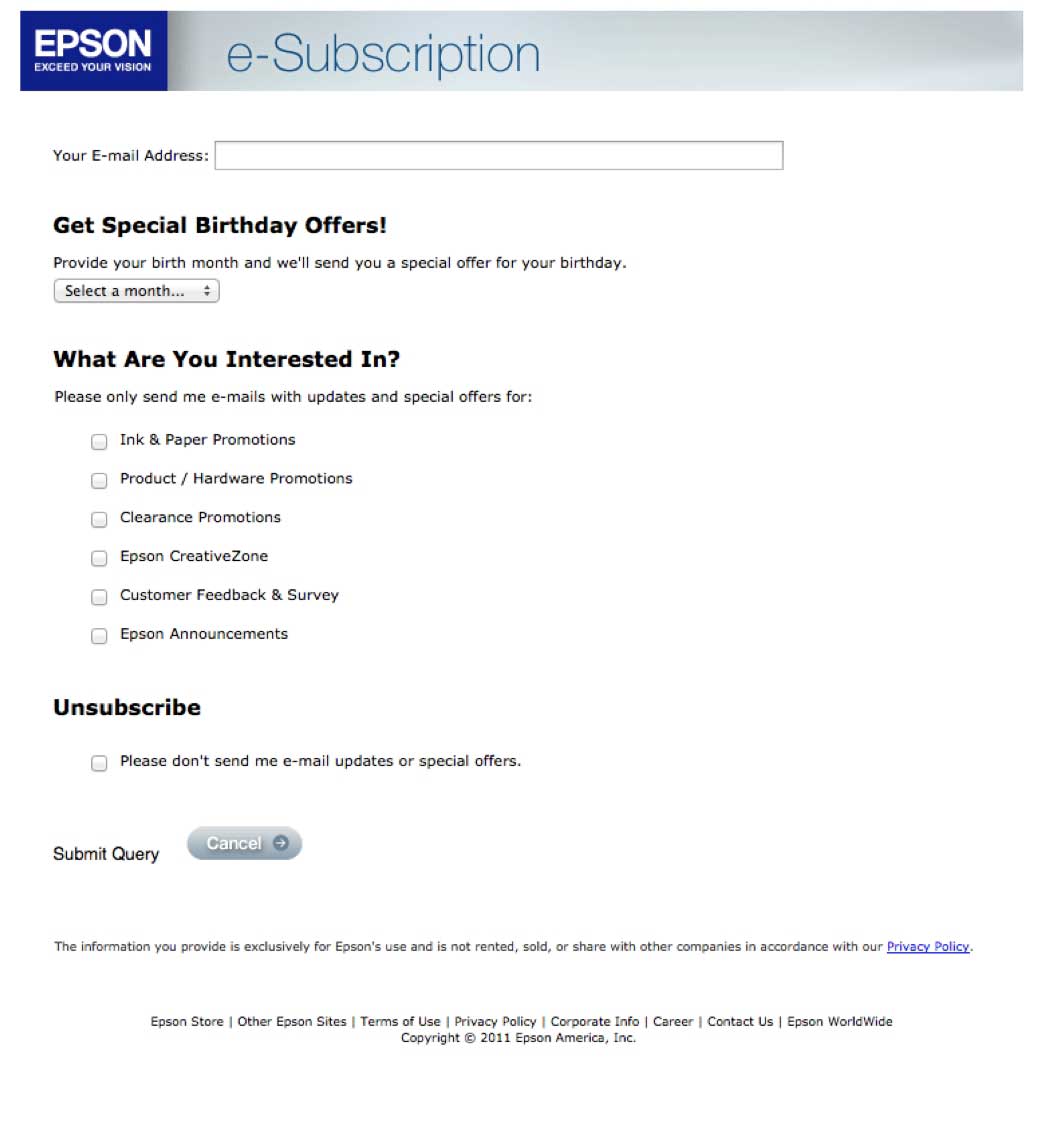You've probably heard the saying, "It's better to ask for forgiveness than permission." All too often I hear from marketers and business owners—those either just starting their email marketing programs or trying to build their lists—who find themselves considering such an unfortunate choice.
This month's email marketing conundrum explores the problem of how to begin sending to a "never been emailed" list, especially if it contains email addresses that may have been obtained without clear permission, such as from LinkedIn, or gathered offline, such as from business cards, membership lists, contest entry forms, prize drawings at events, etc.
My purpose is to present an approach for successfully emailing such a list while avoiding rookie mistakes and pitfalls.
Next time, I'll explore the more complicated conundrum of how (and whether) to email an opt-out list—i.e., a list of people you have no current or past relationship with at all.
For now, let's start with this well-intentioned but short-sighted approach of seeking forgiveness rather than permission.
The Scenario: A 'Never Been Emailed' list
I come across many small-to-midsize business owners actively collecting email addresses from prospects, networking contacts, and clients alike—only to seemingly be saving those addresses for a rainy day.
The problem is, if you don't already have an active email marketing program in place, new additions to your list (or those addresses you obtained months if not years ago) can easily go stale precisely because you're not sending communications on a regular basis.
Why do email addresses go bad? People change jobs, move, switch Internet providers, and pass through natural life stages (like graduating college, getting married or divorced, or retiring) that result in email address changes.
It's not merely email accounts that can be abandoned, changed, or closed; permission itself also ages and erodes:
- People grant permission to receive email from a brand or company, and if they don't soon afterward receive an initial message from the marketer, they may forget they ever agreed to receive email in the first place.
- Or, they might be raving fans of your products and services at the outset (think new parents here), but as life goes on and your relevancy to them wanes, their willingness to receive your email does, too.
The Approach
If you have a "never been emailed" list that may potentially be stale, the first campaign to consider sending to it is a "permission pass," the term for a permission request asking people to either stay on the list or opt out.
Metaphorically, you're giving those who may no longer interested in your email (or who can't remember whether they ever were) a chance to get off the train before it leaves the station.
Here are a few components of an effective permission-pass campaign:
- Restate or remind subscribers how they came to be on your list. For example, "at our open house in June you signed up to receive email, " or "we gathered your email address from our monthly prize drawing form."
- Value, value, value! Explain the fantastic (and hopefully exclusive) opportunities they'll receive by being on your email list. What's in it for them? Special savings? Exclusive content? Advance access or notice? Lay it on thick but be truthful, and get right to the point.
- Clarity! Tell them exactly what, if anything, they have to do to stay on your list and what they must do to be removed. Legally, you're required to have an Internet-based unsubscribe process present within every marketing email message you send, so of course it should be in your permission pass—but you'll probably need to give it prominent placement rather than relegate it to the usual small print at the bottom.
- Set and manage expectations. If they are going to stay on your list, let subscribers know what kind of communications and especially what sort of frequency they can expect. Better yet, if you're launching a rich and diverse email program with many choices, direct subscribers to a sign-up or email preferences center (like this) to help them make their decisions.
Pitfalls—and How to Avoid Them
- Overselling. It's not about what's in it for you, it's about what's in it for your subscribers. Make sure you're writing with their desires and benefits in mind.
- Acting like you've been sending email all along. Make it clear you're just getting your program going and you value your subscribers' time and attention. It's fine to be honest.
- Not removing hard bounces. Some email addresses you mail to will have become undeliverable. Remove them from your list and don't send to them again.
- Not monitoring engagement. Some email addresses you send to will be perfectly deliverable, but they will be abandoned accounts that may have been taken over by the Internet Service Providers (ISPs) that host them and which may have turned them into what is known as "spam traps."
Actively monitor engagement from all non-bouncing email addresses over the first six months (less for high-volume senders) of your program. If you see zero opens or clicks from an email address after this monitoring period, consider reaching out to the subscriber offline to confirm permission. Or, suppress that subscriber from receiving email unless she proactively signs up.
The Wrap-Up
Let's return to the original question: Is it better to ask for forgiveness, or is it better to ask for permission?
Although asking for forgiveness may work better when you're a teen, with email it's clearly better to ask for permission even if you have to do so after investing in building your list.
With commercial email volume still on the rise, scams rampant, and inbox owners growing more discerning by the day, nothing—not even ultra-relevance—will top permission for getting and staying in the inbox. After all, it's not just email list subscribers who are more selective about what they allow into the inbox: The ISPs that host those email accounts are the true gatekeepers of which messages are allowed in time and time again.
Permission is the key you'll need not only to ensure that gate is open for you but also to prevent it from being slammed shut permanently.





